Instruction
Putting Alignment Keys: The Two Forgotten Fundamentals
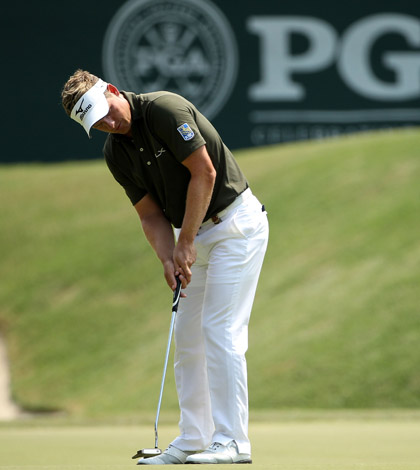
The easiest way for golfers to improve their putting is to align their body square to their target line. But many golfers have a very hard time with their putting alignment.
I have used the SAM PuttLab, as well as AMM’s 3D Motion Analysis System to analyze the body’s actions during the putting stroke. This research has yielded an alignment correlation with the two “forgotten” fundamentals that lead to inconsistency within the average golfer’s putting stroke.
In order to be consistent, a golfer’s “flow-lines” must be parallel to one another; whenever they point in different directions, putting becomes harder than it should be!
Alignment Issue No. 1: The “High” Rear Forearm
Whenever you see a player whose rear forearm is too high at address, you will also see an inconsistent stroke path — one that tends to move out to in. The putter shaft tends to follow the actions of your shoulders, thus, whenever a golfer’s rear forearm is too high, the shoulders usually align themselves open (3.2 degrees in the above example) or point to the left of your target line (for the right-handed player). It is this action that influences the incorrect putter path, and compensations within your stroke to correct for this.
Alignment Issue No. 2: Lateral Spinal Bending
The second most common address fundamental that interrupts the proper “flow-lines” of the body at address is the lateral bending of the spine. Whenever the spine leans too much toward the target, it tends to influence the alignment of the shoulders as well.
Bending the spin toward the target opens the shoulders and raises the right forearm (for a right-handed golfer) as well.
The Solution
You must audit the following things at address to ensure your “flow-lines” are consistent and accurate:
- Your spine must be centered and not leaning excessively one way or the other.
- Your shoulders must be parallel to your ball’s target-line.
- Your forearms must be parallel to your shoulders, as well as to your ball’s target-line.
Use a friend or a mirror to monitor and check these positions if you are putting poorly. I can guarantee that one or all of these fundamentals are incorrect!
- LIKE9
- LEGIT0
- WOW0
- LOL0
- IDHT0
- FLOP0
- OB0
- SHANK0
Instruction
Clement: Laid-off or perfect fade? Across-the-line or perfect draw?

Some call the image on the left laid off, but if you are hitting a fade, this could be a perfect backswing for it! Same for across the line for a draw! Stop racking your brain with perceived mistakes and simply match backswing to shot shape!
- LIKE0
- LEGIT0
- WOW0
- LOL0
- IDHT0
- FLOP0
- OB0
- SHANK1
Instruction
The Wedge Guy: The easiest-to-learn golf basic

My golf learning began with this simple fact – if you don’t have a fundamentally sound hold on the golf club, it is practically impossible for your body to execute a fundamentally sound golf swing. I’m still a big believer that the golf swing is much easier to execute if you begin with the proper hold on the club.
As you might imagine, I come into contact with hundreds of golfers of all skill levels. And it is very rare to see a good player with a bad hold on the golf club. There are some exceptions, for sure, but they are very few and very far between, and they typically have beat so many balls with their poor grip that they’ve found a way to work around it.
The reality of biophysics is that the body moves only in certain ways – and the particulars of the way you hold the golf club can totally prevent a sound swing motion that allows the club to release properly through the impact zone. The wonderful thing is that anyone can learn how to put a fundamentally sound hold on the golf club, and you can practice it anywhere your hands are not otherwise engaged, like watching TV or just sitting and relaxing.
Whether you prefer an overlap, interlock or full-finger (not baseball!) grip on the club, the same fundamentals apply. Here are the major grip faults I see most often, in the order of the frequency:
Mis-aligned hands
By this I mean that the palms of the two hands are not parallel to each other. Too many golfers have a weak left hand and strong right, or vice versa. The easiest way to learn how to hold the club with your palms aligned properly is to grip a plain wooden ruler or yardstick. It forces the hands to align properly and shows you how that feels. If you grip and re-grip a yardstick several times, then grip a club, you’ll see that the learning curve is almost immediate.
The position of the grip in the upper/left hand
I also observe many golfers who have the butt of the grip too far into the heel pad of the upper hand (the left hand for right-handed players). It’s amazing how much easier it is to release the club through the ball if even 1/4-1/2″ of the butt is beyond the left heel pad. Try this yourself to see what I mean. Swing the club freely with just your left hand and notice the difference in its release from when you hold it at the end of the grip, versus gripping down even a half inch.
To help you really understand how this works, go to the range and hit shots with your five-iron gripped down a full inch to make the club the same length as your seven-iron. You will probably see an amazing shot shape difference, and likely not see as much distance loss as you would expect.
Too much lower (right) hand on the club
It seems like almost all golfers of 8-10 handicap or higher have the club too far into the palm of the lower hand, because that feels “good” if you are trying to control the path of the clubhead to the ball. But the golf swing is not an effort to hit at the ball – it is a swing of the club. The proper hold on the club has the grip underneath the pad at the base of the fingers. This will likely feel “weak” to you — like you cannot control the club like that. EXACTLY. You should not be trying to control the club with your lower/master hand.
Gripping too tightly
Nearly all golfers hold the club too tightly, which tenses up the forearms and prevents a proper release of the club through impact. In order for the club to move back and through properly, you must feel that the club is controlled by the last three fingers of the upper hand, and the middle two fingers of the lower hand. If you engage your thumbs and forefingers in “holding” the club, the result will almost always be a grip that is too tight. Try this for yourself. Hold the club in your upper hand only, and squeeze firmly with just the last three fingers, with the forefinger and thumb off the club entirely. You have good control, but your forearms are not tense. Then begin to squeeze down with your thumb and forefinger and observe the tensing of the entire forearm. This is the way we are made, so the key to preventing tenseness in the arms is to hold the club very lightly with the “pinchers” — the thumbs and forefingers.
So, those are what I believe are the four fundamentals of a good grip. Anyone can learn them in their home or office very quickly. There is no easier way to improve your ball striking consistency and add distance than giving more attention to the way you hold the golf club.
More from the Wedge Guy
- The Wedge Guy: Golf mastery begins with your wedge game
- The Wedge Guy: Why golf is 20 times harder than brain surgery
- The Wedge Guy: Musings on the golf ball rollback
- LIKE86
- LEGIT13
- WOW6
- LOL1
- IDHT0
- FLOP4
- OB1
- SHANK8
Instruction
Clement: Stop ripping off your swing with this drill!

Not the dreaded headcover under the armpit drill! As if your body is defective and can’t function by itself! Have you seen how incredible the human machine is with all the incredible feats of agility all kinds of athletes are accomplishing? You think your body is so defective (the good Lord is laughing his head off at you) that it needs a headcover tucked under the armpit so you can swing like T-Rex?
- LIKE0
- LEGIT2
- WOW2
- LOL0
- IDHT0
- FLOP0
- OB0
- SHANK2
-

 19th Hole2 weeks ago
19th Hole2 weeks agoDave Portnoy places monstrous outright bet for the 2024 Masters
-

 19th Hole4 days ago
19th Hole4 days agoJustin Thomas on the equipment choice of Scottie Scheffler that he thinks is ‘weird’
-

 19th Hole2 weeks ago
19th Hole2 weeks agoTiger Woods arrives at 2024 Masters equipped with a putter that may surprise you
-

 19th Hole3 days ago
19th Hole3 days ago‘Absolutely crazy’ – Major champ lays into Patrick Cantlay over his decision on final hole of RBC Heritage
-

 19th Hole2 weeks ago
19th Hole2 weeks agoTwo star names reportedly blanked Jon Rahm all week at the Masters
-

 19th Hole1 week ago
19th Hole1 week agoReport: LIV Golf identifies latest star name they hope to sign to breakaway tour
-

 19th Hole2 weeks ago
19th Hole2 weeks agoNeal Shipley presser ends in awkward fashion after reporter claims Tiger handed him note on 8th fairway
-

 19th Hole1 week ago
19th Hole1 week agoBrandel Chamblee has ‘no doubt’ who started the McIlroy/LIV rumor and why

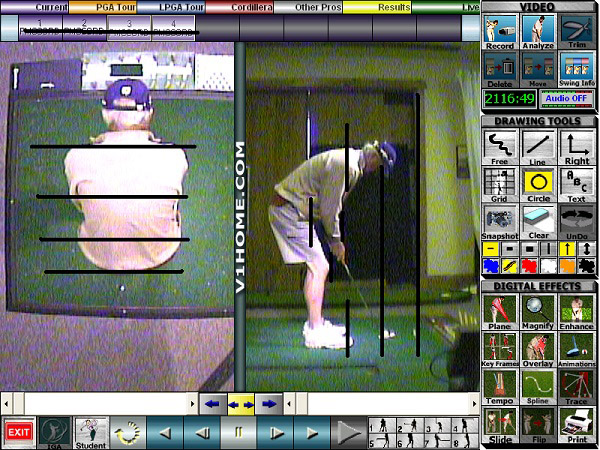
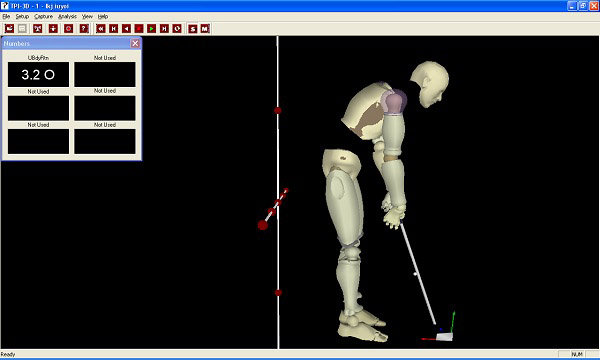
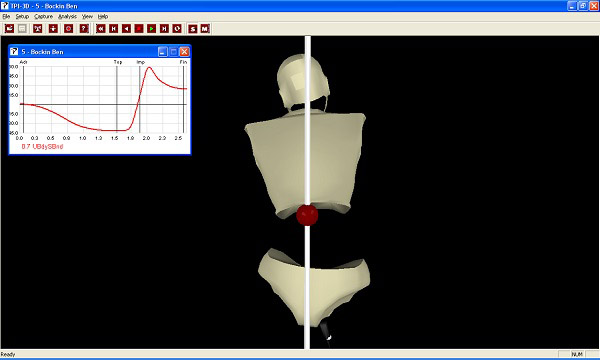
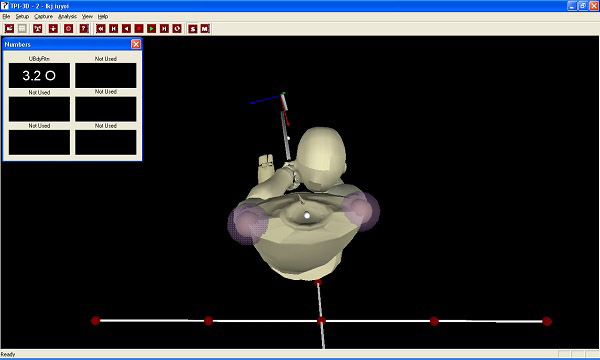























dl33tter
Aug 6, 2013 at 5:10 am
I’m not too sure about the forearms – by virtue of the grip, one forearm will *always* be higher than the other – unless both hands are coincident on the club. Think about if – either the right hand or the left hand will be low – a high right forearm is more common as most golfers would be right handed, and would use the normal full swing grip – i.e. right hand low ==> right hand further from the body ==> right forearm further from the body ==> right forearm ‘high’. If you held the club left hand low, you’d have the opposite ‘problem’. You can try to make the elbows the same ‘height’, but then you’d have another issue in that the right hand is pulling the putter handle towards the body (since presumably both forearms are about the same length, forcing the elbows to be at the same ‘height’ means the right hand is pulled towards the body). Or, both hands have to be rotated clockwise (golfers’ view) to bring both wrists to the same plane, rotating the putter face open.
Chris Hale
Jul 26, 2013 at 7:01 pm
I have always struggled with squaring my shoulders in all facets, and have adopted a left hand low grip with the putter to help. Tom, in your experience, is this a good fix?
Michael Howes
Jul 20, 2013 at 10:40 am
Very well written article and information. Thanks for posting it.
Carlo Williams
Jul 19, 2013 at 3:59 am
Hi Tom
I absolutely agree with this article. Aligning my feet, hips and shoulders (or flow lines) is something I institued in my game 2 months ago to try and get the club face moving along the correct path. My putting, and confidence has improved tremendously as I feel that the action is repetitive, it is easier to commit to a line, and the only guess work is the speed of the putt. I believe too many people have a hit instinct, even with a putter, instead of making a smooth stroke.
golfwb
Jul 18, 2013 at 12:00 pm
Great article! Mr. Stickney, don’t worry about the criticism. People say things on the internet that they would never say to your face. I know I speak for the vast majority of reader on this site in saying, it is very nice to have a teacher of your caliber take the time to write pieces like this one. Keep up the good work.
Tom Stickney
Jul 18, 2013 at 1:53 pm
Mr golfwb-
Thank you. My pleasure to put my thoughts out there for those of you whom enjoy it. I’m not always correct but I always try to do my best.
jeff
Jul 17, 2013 at 6:03 am
Well presented and very helpful
Nip
Jul 16, 2013 at 9:16 pm
Side saddle! Absolute easiest way to legally get the ball in the hole. I wouldn’t be surprised, with the anchoring ban, if a few tour pros switch to putting face-on.
slkdhfgsakjbva;fljb
Jul 16, 2013 at 7:15 pm
I completely disagree with this article. Promoting a “best method for all” is hazardous and lazy.
Tom Stickney
Jul 16, 2013 at 9:30 pm
There is no one way to putt as we all know…this is a general putting article for the masses who tend to make the same type of mistakes..
Secondly, please do not refer to my professional career or my instructional thoughts as lazy- I’m anything but. I find it quite insulting with all the time and effort I put in to these articles (for you to enjoy) that you would say such a thing without knowing me personally or professionally.
8thehardway
Jul 17, 2013 at 11:16 pm
Only someone so bereft of initiative they randomly hit keys on the 3rd line of the keyboard to create their id could 1. be so monumentally dismissive and 2. believe their statement rises to the level of intelligent discourse.
I also find flow (I think of it as coherence) more reliable than the alternative. Thanks for the research and info.
Jim H
Aug 13, 2013 at 11:15 am
How do you read this as a “best method for all” anonymous internet troll?
Its a well thought out, well documented article.
Joe S.
Jul 16, 2013 at 5:46 pm
I don’t understand ” forearms must be parallel to your shoulders, as well as to your ball’s target-line.” Can you explain/elaborate?
Ted Gallina
Jul 16, 2013 at 1:37 pm
Tom – nice article on putting alignments. You hit on one of the many benefits of using a SeeMore putter. The putter aligns your body by hiding the red dot at address position. Your shoulders, hips and feet are all square to the intended target line. Just like you said this brings consistency to your putting stroke.